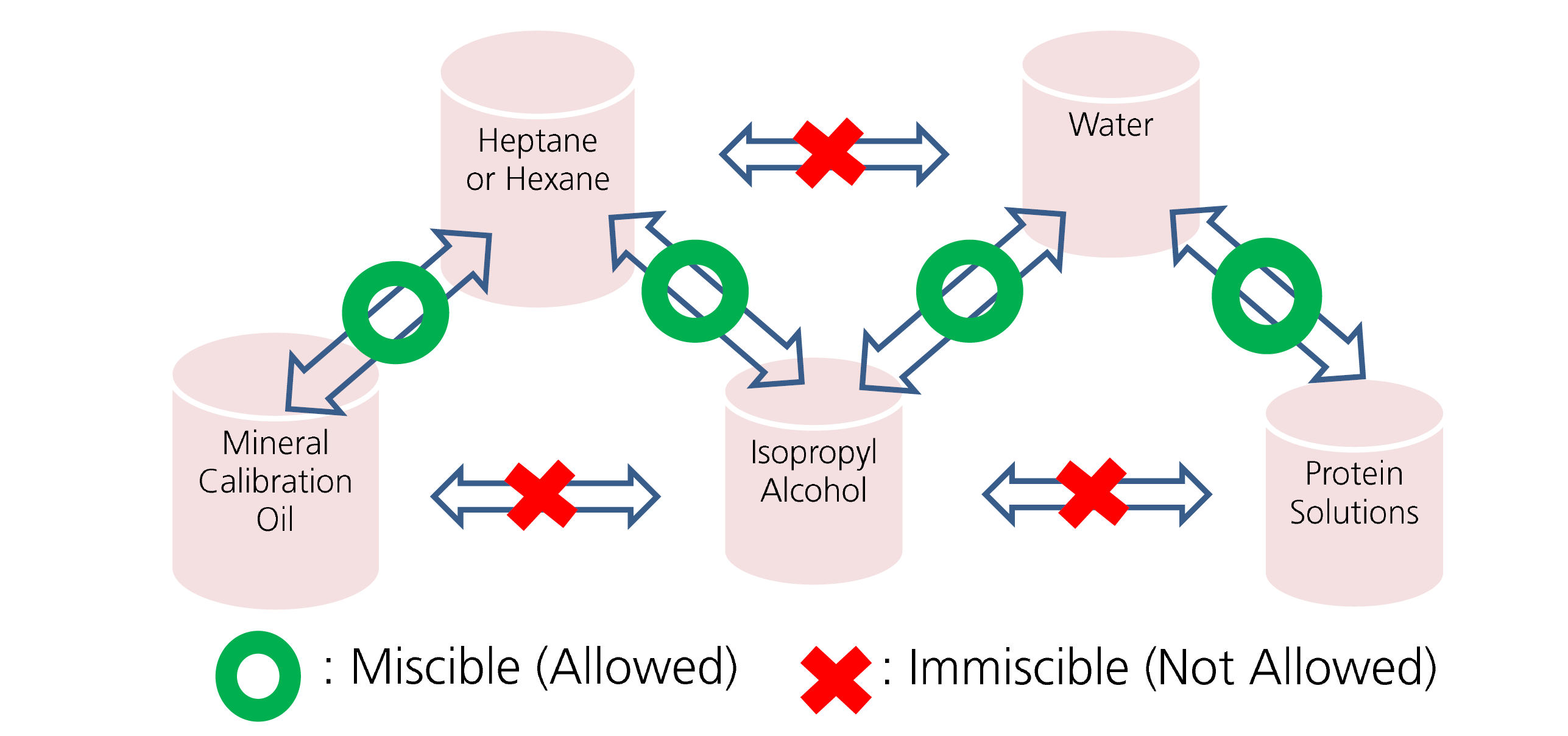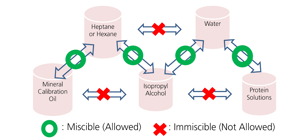Spring is here and what that means for many is seasonal spring cleaning! While you may be cleaning your closet with clothes from years past, we also recommend cleaning your VROC® chips and viscometer diligently.
Here are some good rules of thumb to keep in mind:
1) When you are running miscible samples, you technically do not need to clean in between. So if you are running for example, different concentrations of the same sample, you do not need to clean and can go from Sample A to Sample B.
2) When you are running samples that are not miscible, you will need to clean. Here is a sample diagram of comparing heptane/hexane, isopropyl alcohol, and even protein solutions. Often times the miscibility of solvents may not be as obvious as oil and water. To do a quick check of miscibility, mix the two liquids in a clear bottle (we normally use a 20 mL vial). If two liquids are miscible, you should not see any phase separation, sedimentation, or aggregation.
Running immiscible solvents may not always be detrimental but make sure you understand how your samples behave. Oil and water won't cause irreversible damage but mixing proteins and alcohol will cause the proteins to crash out.

3) Your samples may be unique but we have some commonly used cleaning solvents including but not limited to:
- 1% Aquet
- Isopropyl Alcohol (IPA)
- Heptane
- Acetone
- For biofluids, bleach (do not store in bleach)
- Tergazyme
- Zymit Pro

Interested in moving from your current method to VROC to reduce cleaning or have questions on how to create your own cleaning protocol?
Written by: Grace Baek, RheoSense Operations Manager

